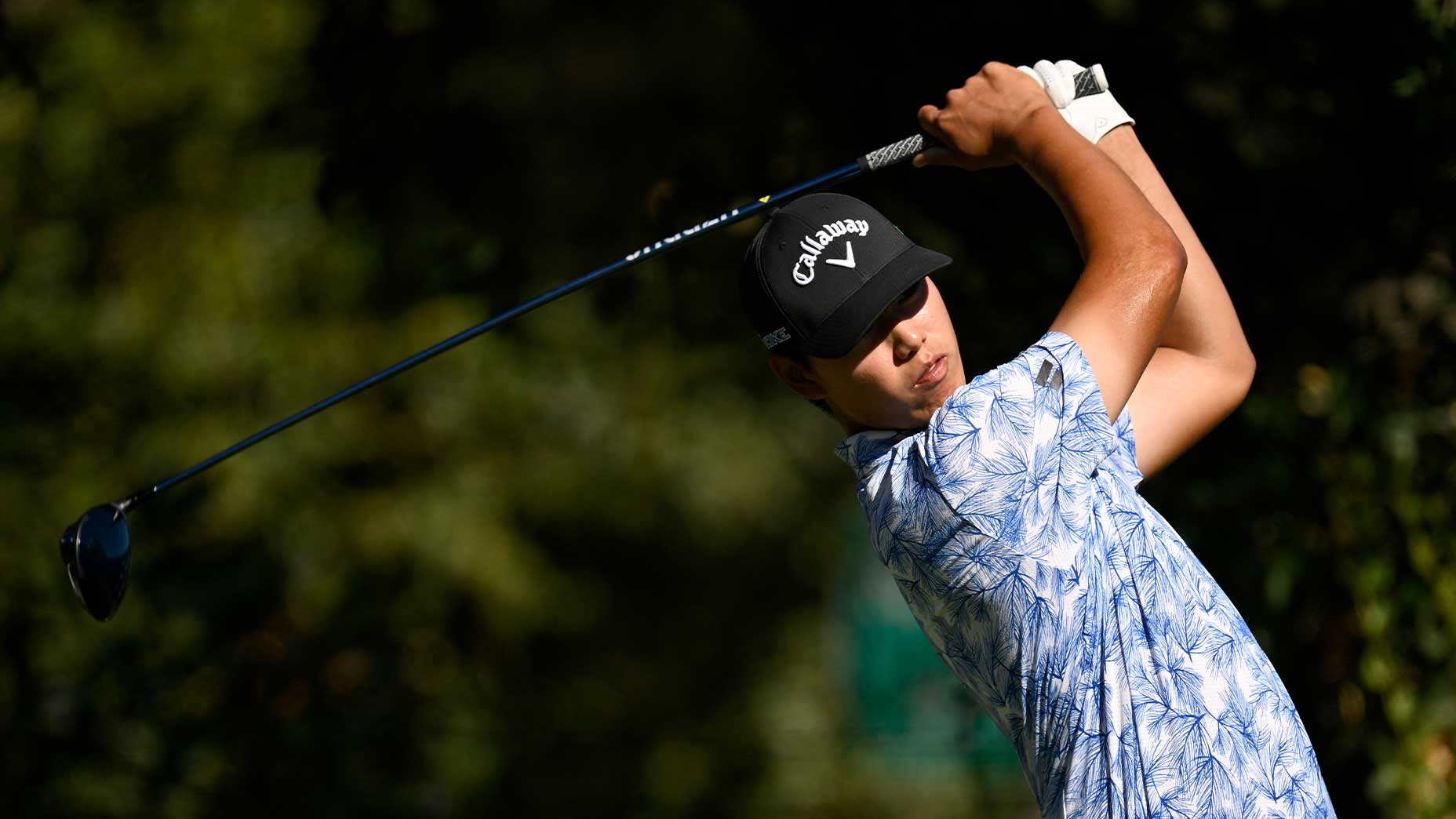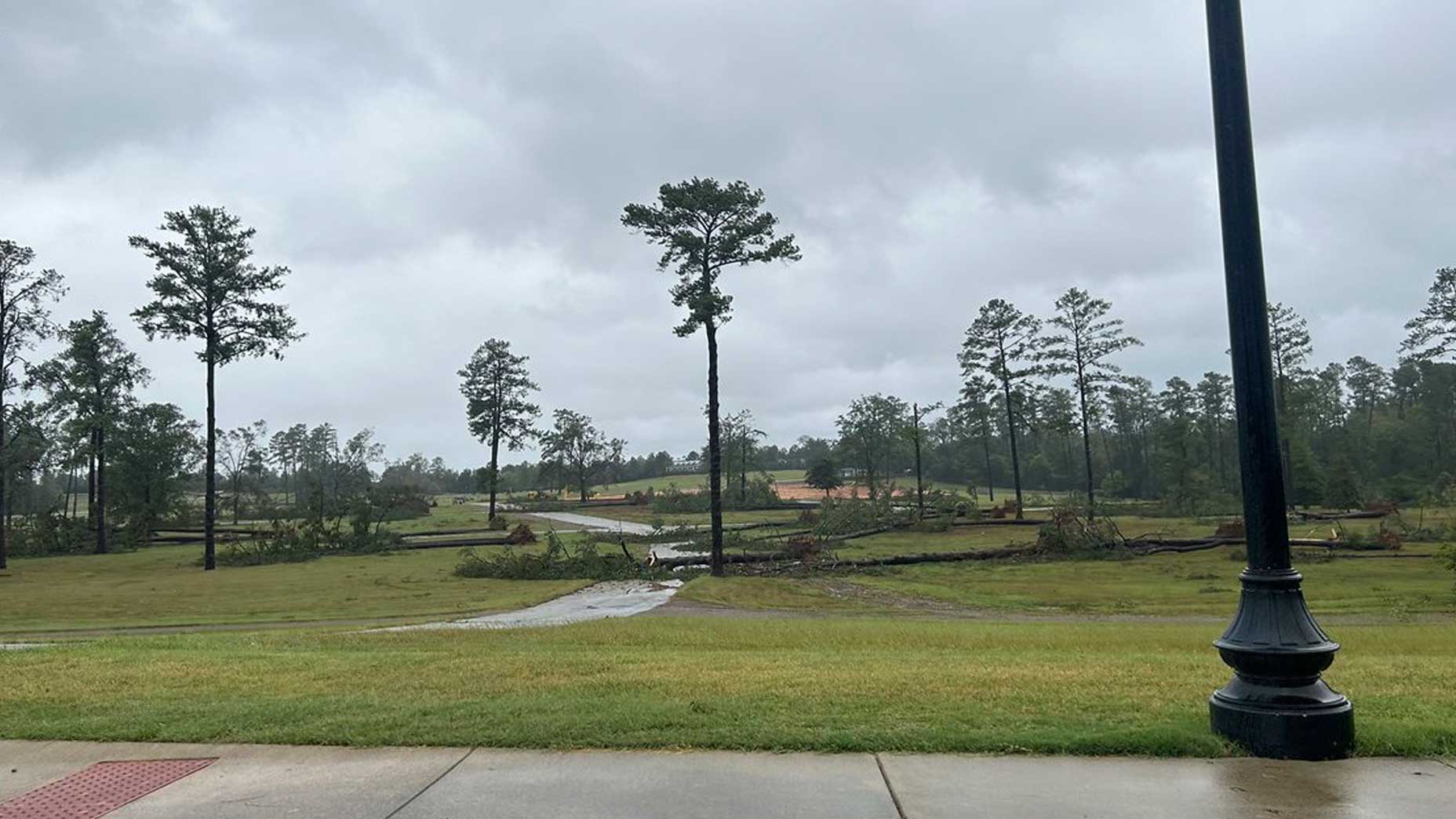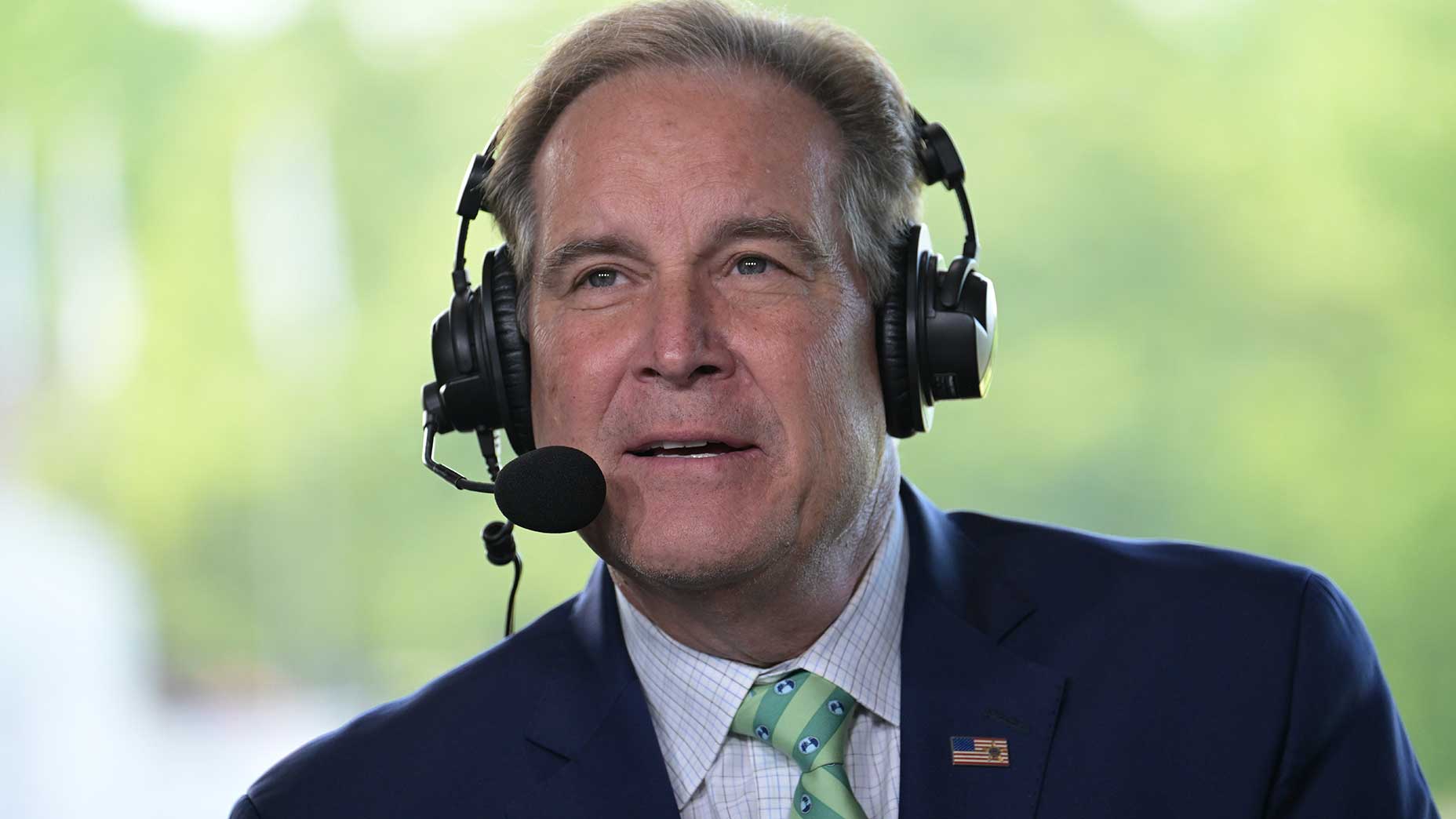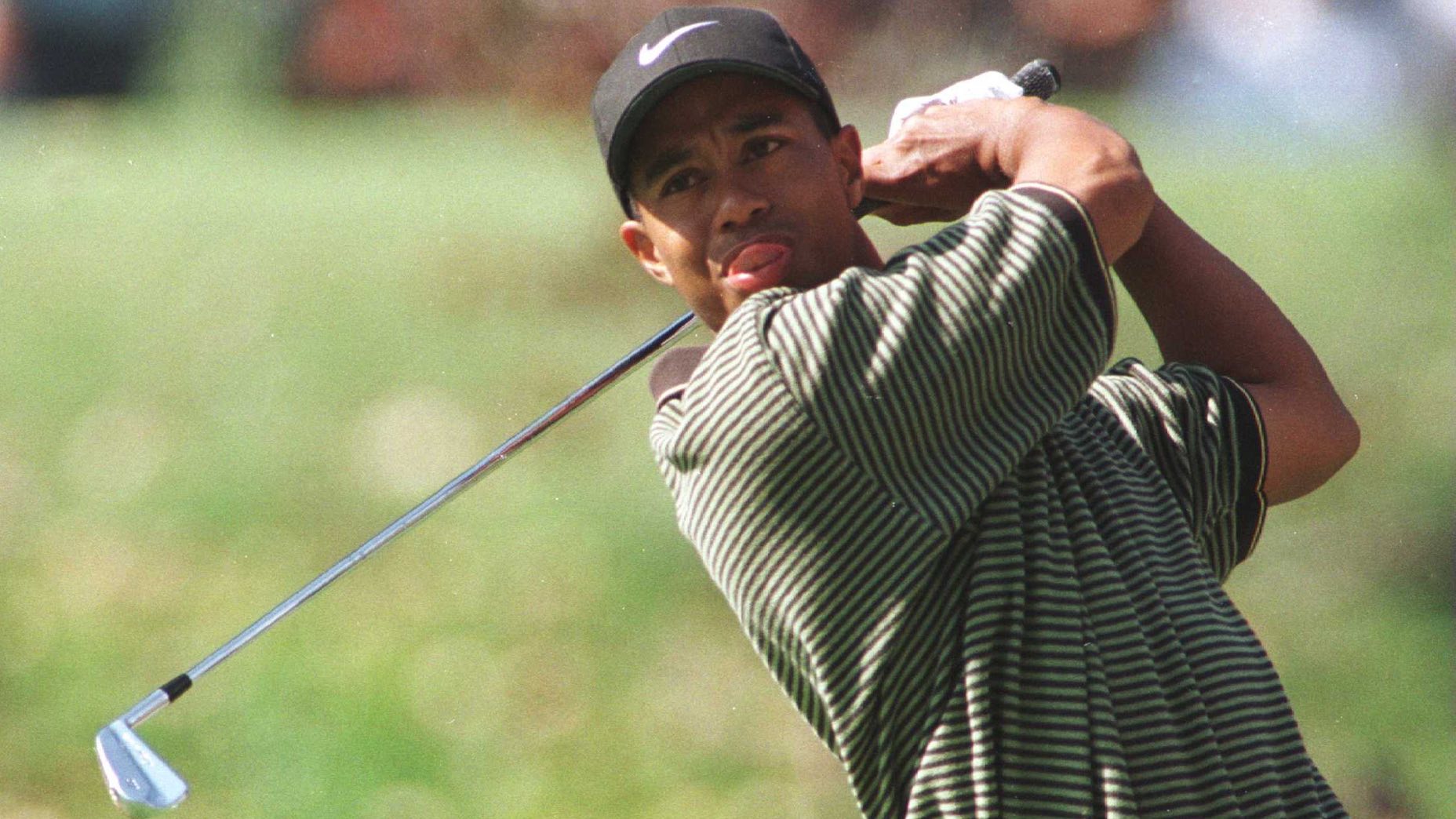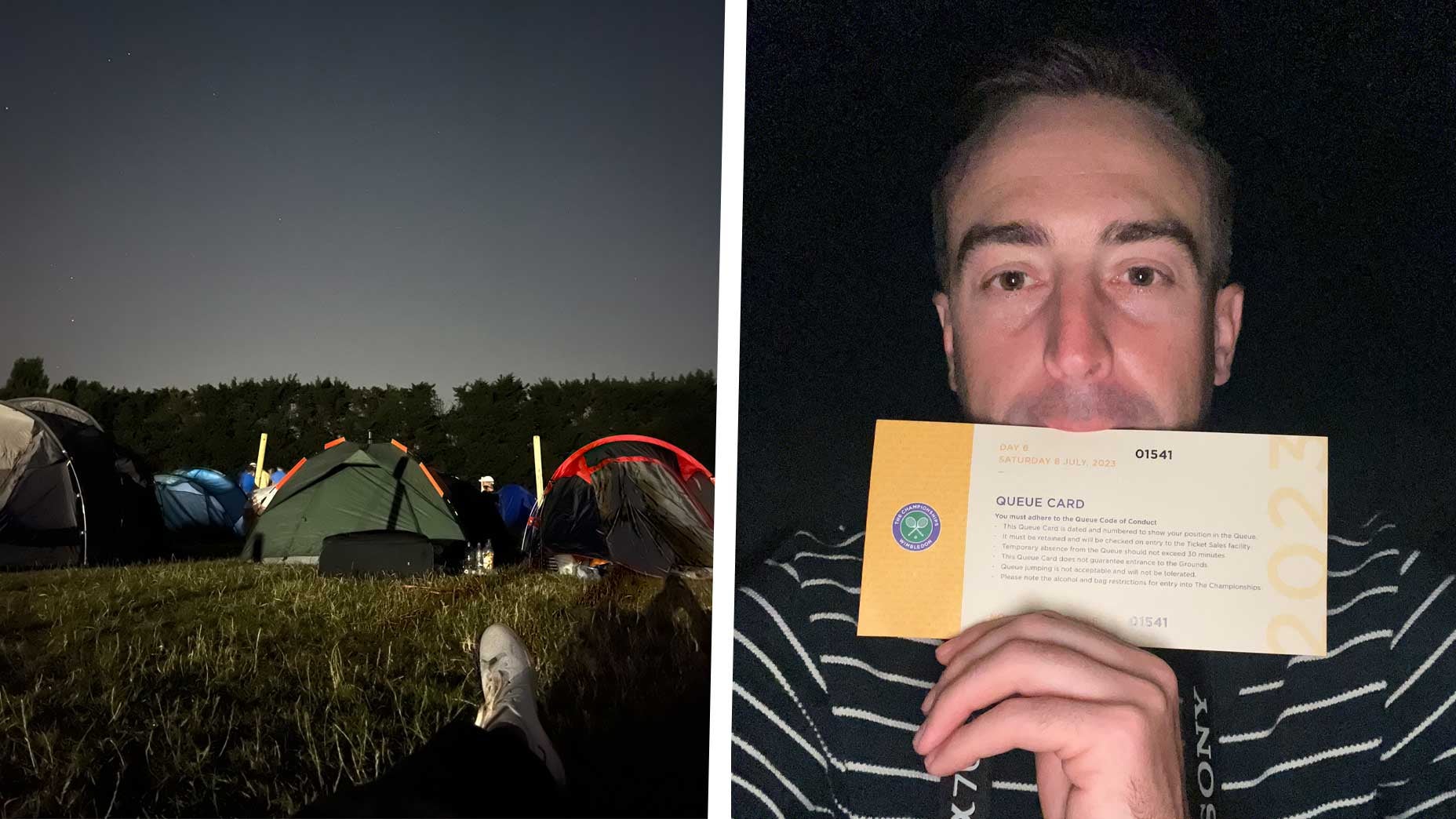Masters Notebook Dump: media lottery, Augusta’s investment, best viewing spot
- Share on Facebook
- Share on Twitter
- Share by Email

The 2024 Masters is behind us. Here are a few parting thoughts.
getty images
The 2024 Masters is behind us, but we’re not quite ready to let it go! To put a bow on the week that was, we asked our onsite reporters to look back on the tournament and reflect on one item or observation that didn’t make it into their coverage.
Ted Scott’s victory parade
by Claire Rogers
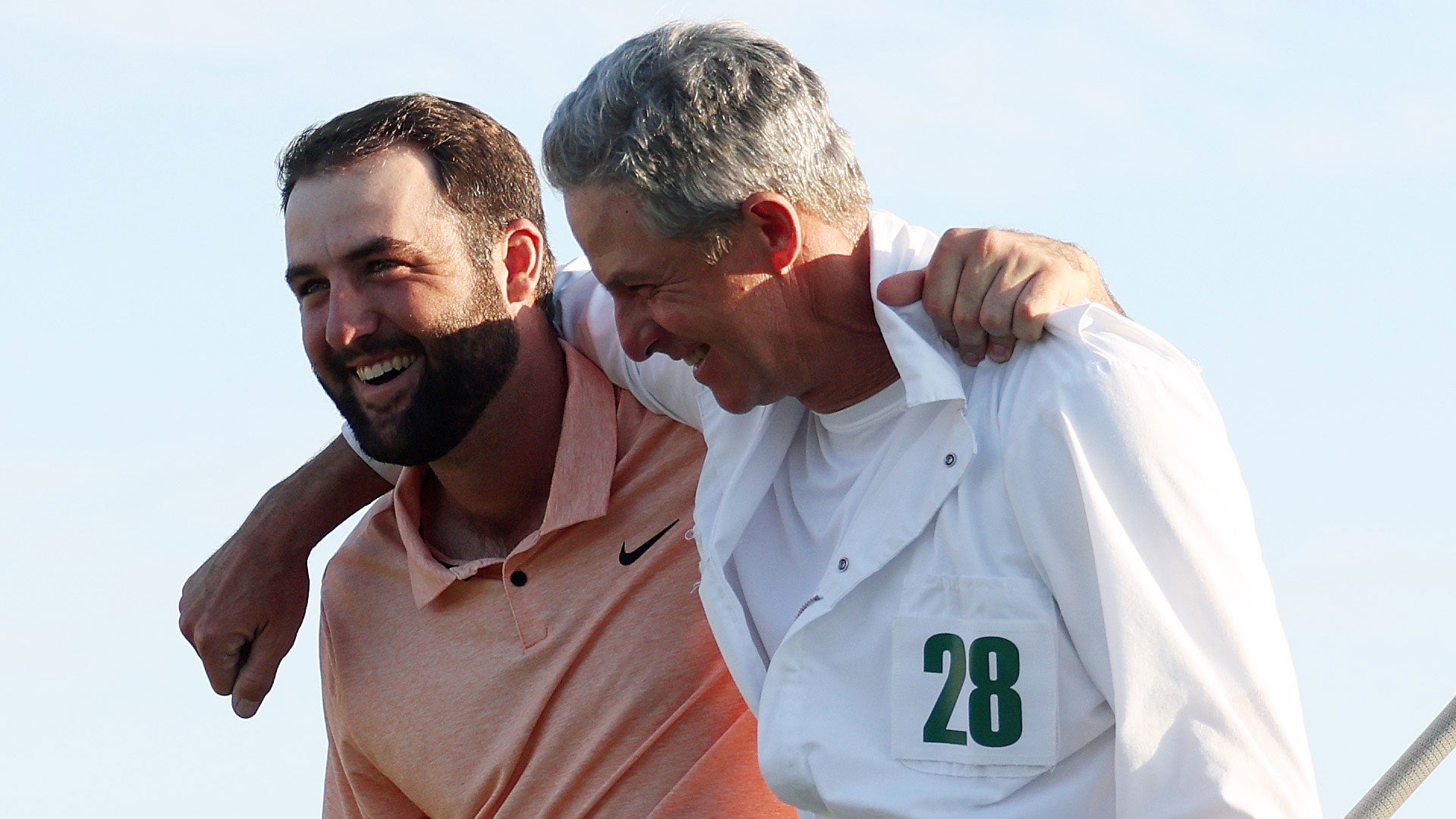
I won’t soon forget one of the last things I witnessed on property. About 10 minutes after Scottie Scheffler and his caddie, Ted Scott, made their victory walk together from the 18th green to the clubhouse, I headed to the front of the clubhouse to start my own walk back to the media center. A few moments later, about 40 or so Masters Week employees began clapping from the clubhouse’s front yard. I turned around and saw Scott in the passenger seat of a cart holding the pin and flag from 18. He was on his way to his car.
Smiling from ear to ear, he waved at the workers as he passed by; it felt sort of like those Royal parades you see on television. It was the perfect sendoff for Scott after his fourth Masters victory as a caddie, and the perfect ending to my week because it highlighted the specialness of Augusta National. I met so many kind people on the grounds, especially those who worked long hours behind the scenes, and it was a joy to see how they send off their victors.
How to prepare for a round at Augusta National
by James Colgan
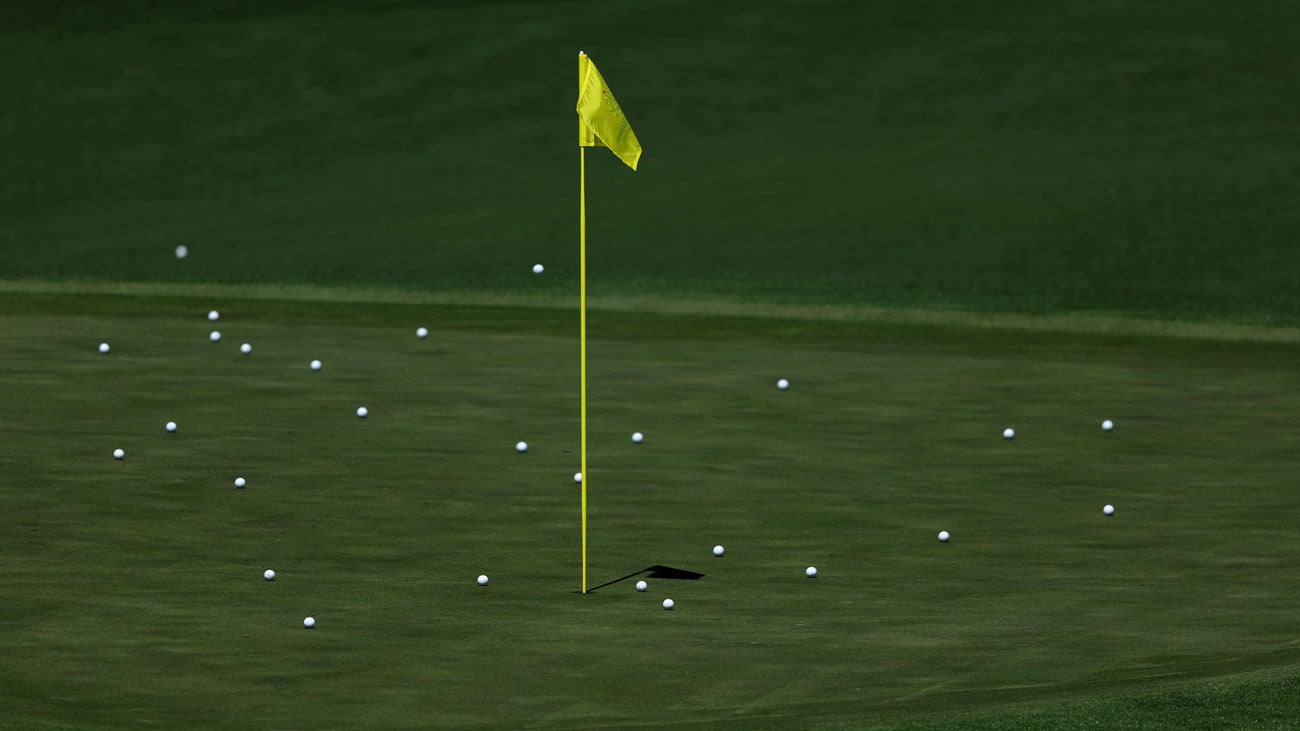
How do you prepare your mind, body and soul for a round at Augusta National?
Glad you asked.
Late on Monday morning, by the great fortune of the golf gods and something called the Masters’ Media Lottery, I was given the opportunity to learn as much for myself.
Sometime in the future, I’ll regale you with the tale of the greatest golf day of my life — past, present or future. But for now, I’ll share only how I arrived on the first tee box at Augusta National. More important, I’ll tell you how I did it without fearing for my life or the general trajectory of my golf ball.
The first key was good timing. The green jackets — perhaps sensing the recent downward spiral of my golf game and utter lack of sleep during tournament week — graced me with one of the day’s latest tee times, 11:40 a.m., which meant I had ample time that morning to find a driving range in the area. This was important, because I had not swung a golf club since a round two weeks earlier that was so uninspiring I vowed to my colleague, Sean Zak, that I would never swing a golf club again.
After a lengthy morning stretch in our rental property, I drove to The Practice Club at Jones Creek and vastly overpaid for 125 practice balls. In the hopes of not dramatically embarrassing myself, I spent my time on the range focusing on two relatively simple swing thoughts: short and slow. I borrowed my thinking from Jon Rahm — a swing with less happening would mean less time for something to go wrong.
After a few relatively effective swipes, it was time to head in. I climbed in my rental car and queued up a pregame playlist of mindfulness meditations. As I pulled onto Bobby Jones Highway, I became so focused on my breathing and thoughts that I briefly found myself driving at speed that will remain unmentioned for fear of the Georgia State Police Association.
A short while later, I arrived at the most famous entrance in golf, Magnolia Lane, and began the short drive into golfing nirvana. I drove windows-down and crawl-slow, stopping for long enough to notice Masters-green painted curbs and a few gleaming Pro V1s splattered across the member’s practice range. I dropped my car and was sent off to the Champions Locker Room, where for the first (and only) time in my life, I was greeted by the sight of my name beneath Ben Hogan’s.
Just when I began thinking I had lost my mind, I quickly returned to earth with an ugly display of capitalism in the ANGC pro shop. After a tap-to-pay that wounded my bank account irreparably, I took a deep breath and headed up to the first tee.
I wish I could say that I had some key to Augusta National; that my range time or meditation had focused me for the round ahead. But the truth is that you won’t ever be prepared for a round at Augusta National. There’s no way to make sense of the history, both personal and golfing, that practically falls out of the trees around you.
So, here’s my advice: Don’t. If you’re ever lucky enough to experience a slice of golf heaven, play fast, have fun and take a beat to look around. Don’t make the moment more than it is, make it what it actually is: an opportunity to feel grateful for the (wildly) good fortune that’s led you to this point.
Maybe you’ll still start your round with an ugly block onto the 9th fairway. Or maybe, just maybe, you won’t.
At this Masters, a different kind of major broke out
by Alan Bastable
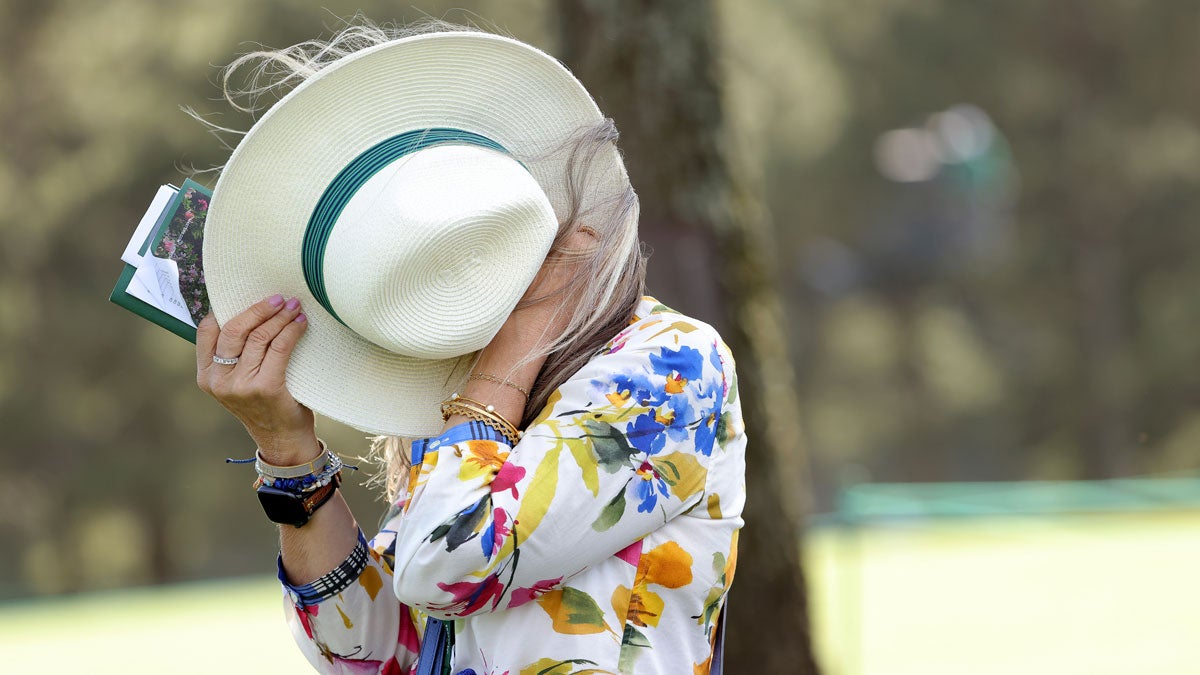
Shane Lowry, who was born and raised in the middle of Ireland and won the 2019 Open Championship on the wild and woolly links of Royal Portrush, in Northern Ireland, has long been considered a mudder — that is, a player who thrives in the wind and rain and whatever other nastiness Mother Nature might throw at a field. So, you might have thought that Lowry would be undaunted by the wind forecast for the first half of Masters week. As he told reporters before the tournament, “You have to take it on the chin and move on.”
But there are bothersome breezes and then there is what whipped through Augusta National’s pine-lined allies on Thursday and Friday. It didn’t just blow, it howled, at times well above the speed limit enforced in most small towns. The up to 45-mph gusts rattled flagsticks, toppled chairs and, for the players, made Augusta National about as much fun as Tax Day, with the second-round scoring average ballooning to 75.07.
This grizzled reporter had never seen anything like it on this course and neither had many of the players. Approach shots dropped from the sky like wounded birds. Downwind chips onto the glassy greens would have been easier to stop on countertops. Frustrated players grumbled and cursed. This wasn’t a Masters, it was some madcap blend of a U.S Open and the Open. “One second you’ll have a shot that’s playing 150,” Rory McIlroy said afterward, “and then if the wind does something different, the shot could be playing 180.”
But Lowry’s comments most stuck with me.
“Probably the toughest two days of golf that I’ve played,” he said after a second-round two-over 74 that left him four under the cutline. “You can be made to look like an idiot out there today by not doing too much wrong.”
Lowry struggled with club selection — on the par-3 12th, where he airmailed the green, he regretted not having hit a 9-iron instead of an 8 — but he said the biggest challenge was putting. On 18, he had a 10-footer down the hill for birdie. “One of the easiest putts you can get,” he said later. He told his caddie, Darren Reynolds, that he knew the putt well: the break, the grain, the speed. But in the wind even the sturdy Lowry couldn’t find his tempo, missing half-a-ball short and right. After tapping in for 4, he glared at the hole with some combination of disbelief and disgust. A few paces later, he did it again. One of those days.
The exciting potential of an Augusta National investment
by Sean Zak
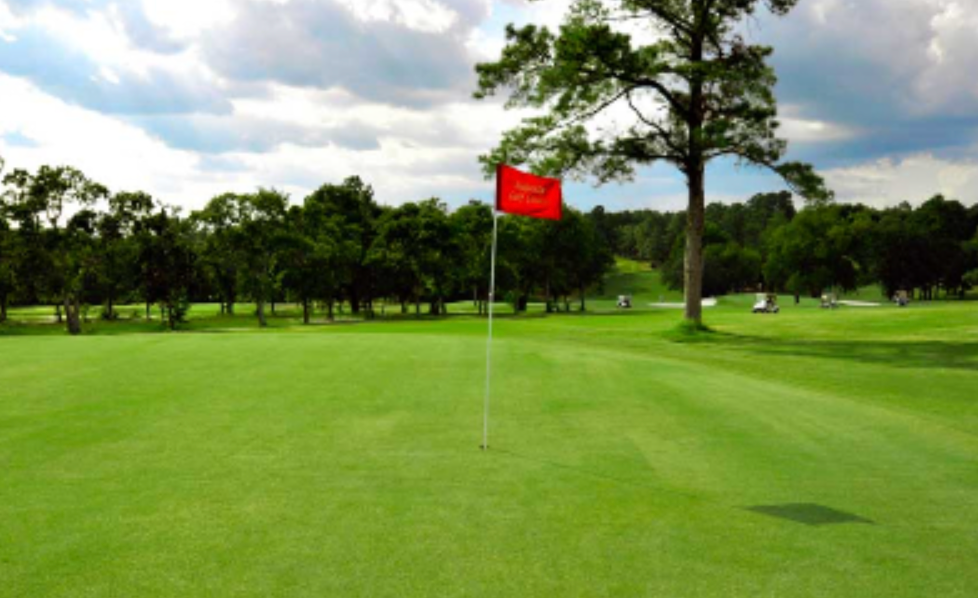
Every year, Augusta National raffles off a handful of tee times to members of the press. It’s a nervy, exciting moment, mid-tournament, when the winners are selected. This year, our lucky staffer, as you read above, was James Colgan.
It’s a lovely tradition that helps inform those in the press center (and whoever reads their work) about what it’s like to play a golf course that good in conditions that difficult. I desperately want a slice of that pie but am never too disappointed when my name goes unpicked, because that means I get to play somewhere else instead: The Patch.
The Patch is five miles south of Augusta National and is also known as Augusta Municipal Golf Course. (For decades it also has been the home of Black golf in Augusta, a city that is 56 percent Black.) It is a place with life. Where strangers strike up conversations. It is a cheap tee time with a big parking lot and an unkempt driving range with mismatched balls. It’s the most comfortable setting this sport can imagine.
And yet it still has so much more potential.
On Monday, I couldn’t stop thinking about that potential, because Augusta National has pledged to make a significant investment in the property. The club started the process by handpicking Tom Fazio and Beau Welling to lead the renovation. But in typical ANGC form, chairman Fred Ridley kept his remarks about the project brief during the prepared-statement portion of his Wednesday-morning press conference. The final question of Ridley’s presser, though, did extract a bit more intel from him. While parts of the plan still sound subject to change, Ridley said we can expect:
1. A short course. Fantastic. Where 8-year-olds can make their first par.
2. Freshening up the clubhouse. The history of that building is important both to the city and the game at large. It sounds like the stewards of ANGC understand that.
3. It’ll be a place for Augusta Tech’s golf management program to call home. An education center of sorts, launching golf industry careers.
4. Ridley hopes the property becomes a “hub for junior and high school golf.” Taking the phrase “growing the game” to a very literal result.
All of that detail made for a happy walk around The Patch Monday morning. Because potential to me, the visiting golfer, is a new 3rd hole, a flattened 5th green, a bigger 6th green and a reimagined back nine. That’s my experience there, netting out to a score somewhere between 82 and 87 before driving back to Atlanta. But potential to the residents of Augusta will mean something completely different. I don’t doubt Augusta National’s ability to help create a fantastic golf course, but it’s the accoutrements that serve a public good that the club really need to nail with this project. We paid $25 this week, and anticipate paying much more next time we do, during Masters Week 2026. No doubt it will be money well spent.
The best hangout at golf’s best tournament
by Josh Berhow
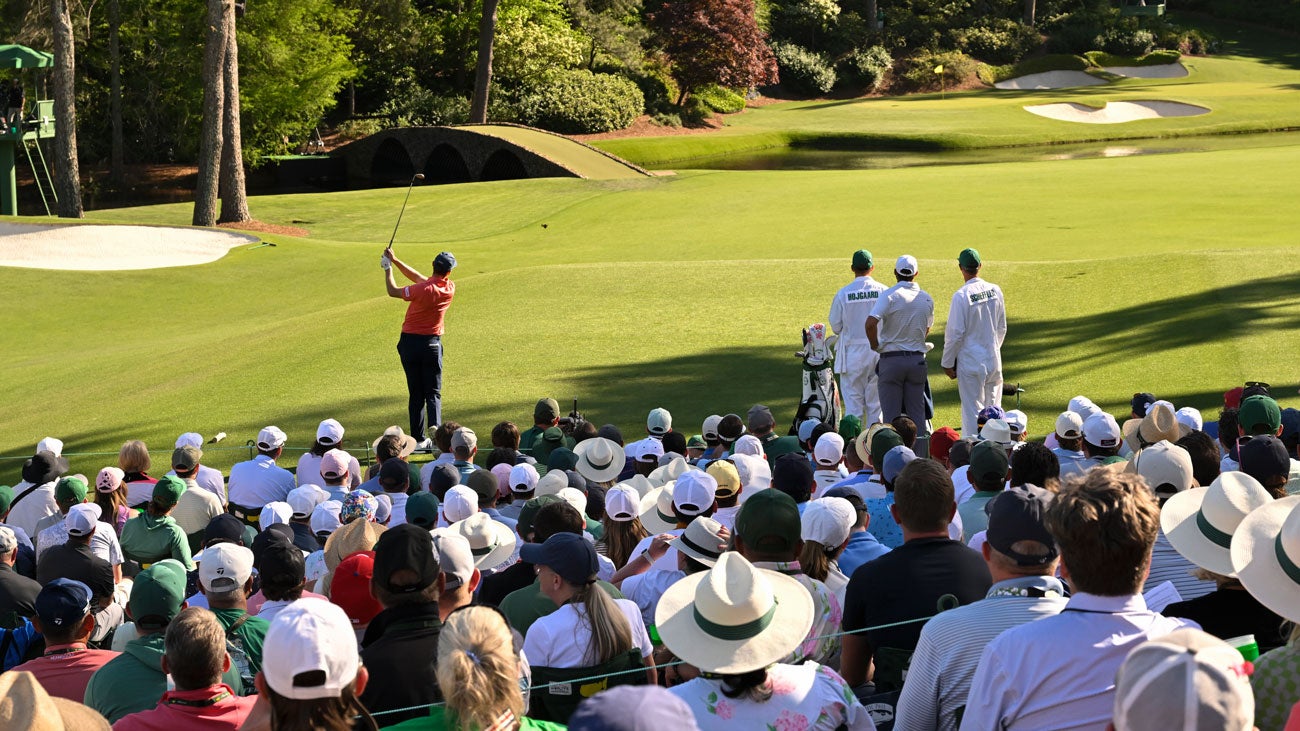
Way down in the south corner of Augusta National Golf Club, about 150 feet below the clubhouse — that’s the height of the Statue of Liberty! — is the best hangout at the best golf tournament on Earth.
Here, down in Amen Corner, has everything a patron could need. Grandstands, concessions, a merch tent and shade, not to mention sight lines to the green of the hardest hole (11th), best par-3 (12th) and best par-5 (13th).
Not convinced? Take a gallery guard’s word for it. He’s been stationed here 32 years. Sure, he may be biased, but he’s probably not wrong. One year some friends of his came to the Masters and visited him at his Amen Corner perch. They asked him for suggestions on a special place to watch the action that day.
“Something special? This,” he said, waving his arms, “is it.”
From his post, our guard has had one of the best views of some of the greatest shots in Masters history. Sure, everyone points to Phil Mickelson’s escape from the pine straw in 2010, but he’s quick to cite Jeff Maggert’s albatross in 1994. He’ll also tell you, in great detail, about memorable shots he’s seen from the likes of Nick Faldo and Seve Ballesteros.
There’s at least one more reason he thinks this area is so great. It’s the spot that so often produces the tournament’s turning points. He’s right again. Witness Sunday, with Collin Morikawa, Ludvig Aberg and Max Homa all succumbing to their fate down here.
“Can’t beat this, can ya?” the guard said.
No, you cannot.
The joy of learning something new
by Michael Bamberger

The second-floor porch at the Augusta National clubhouse is a good place to take in the spectacle of the last twosome teeing off on Masters Sunday, if you’re fortunate enough to be there. I was, and from my lucky spot I could see the top of Scottie Scheffler’s head and, at the top of his backswing, Collin Morikawa’s clubhead. It looked like a 3-wood, which is amazing. Even there you can feel the tension and the excitement. It’s in the crowd’s murmuring, and in its silence.
I also saw, on the lawn that separates the clubhouse from the first tee, my lumbering young colleague James Colgan approach Erik van Rooyen, the South African golfer, and his wife, Rose. Colgan’s shirttail was out and his notebook was in his righthand hand and he seemed to be asking the golfer a short series of questions. Van Rooyen, in size Colgan’s equal, seemed happy to engage with him. After a minute or two, reporter and golfer raised their right hands for a bro clap-shake, thumbs catching, mid-chest. Colgan walked off, grinning. It was obvious: He had got something.
I had to know. I came down and found Colgan. He had asked a question about the golfer’s given name, Frederic. Colgan learned that van Rooyen, in Afrikaner tradition, was named for his paternal grandfather. Erik comes from that. Colgan was still grinning. Reporters love learning something new.
Latest In News

Alan Bastable
Golf.com Editor
As GOLF.com’s executive editor, Bastable is responsible for the editorial direction and voice of one of the game’s most respected and highly trafficked news and service sites. He wears many hats — editing, writing, ideating, developing, daydreaming of one day breaking 80 — and feels privileged to work with such an insanely talented and hardworking group of writers, editors and producers. Before grabbing the reins at GOLF.com, he was the features editor at GOLF Magazine. A graduate of the University of Richmond and the Columbia School of Journalism, he lives in New Jersey with his wife and foursome of kids.


